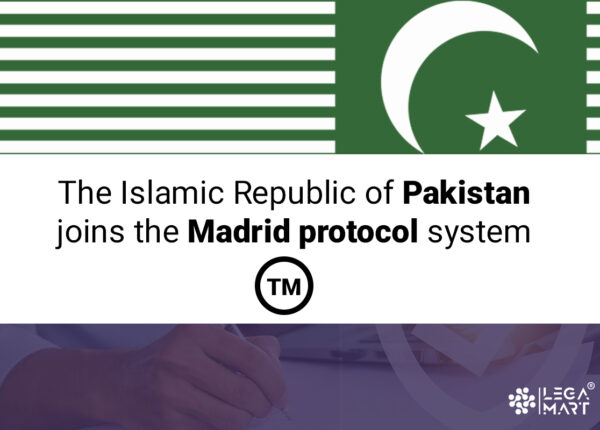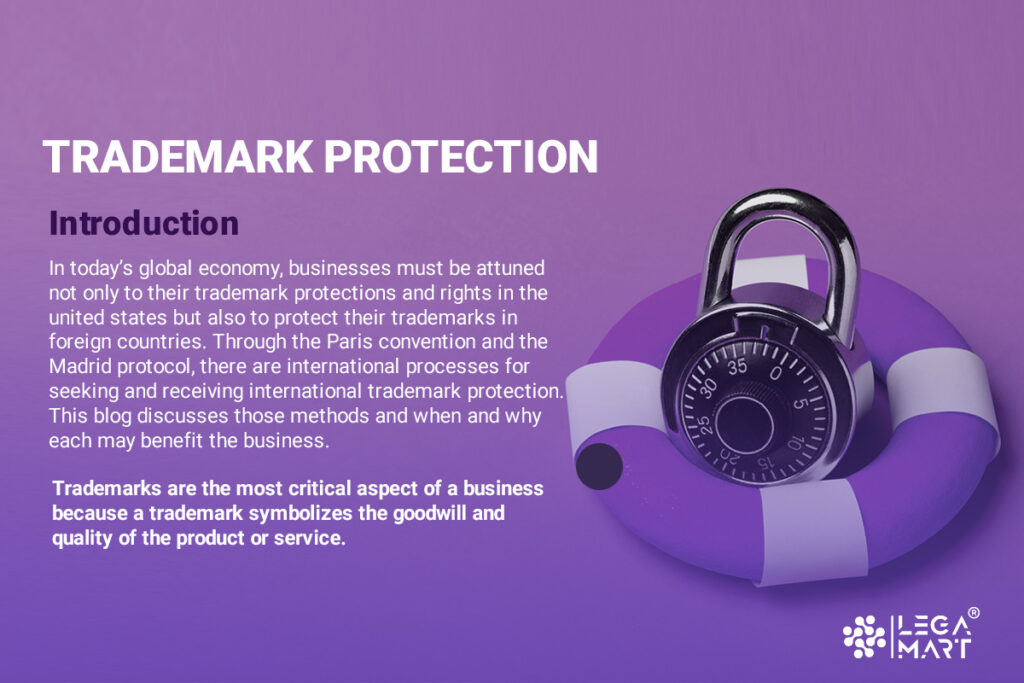This article is written by M. Javed Iqbal
Introduction
In today’s global economy, businesses must be attuned not only to their trademark protections and rights in the United States but also to protecting their trademarks in foreign countries—a key aspect of Cross-Border & International Law. Through the Paris Convention and the Madrid Protocol, there are international processes for seeking and receiving international trademark protection. This blog discusses those methods and when and why each may benefit the business.
Trademarks are the most critical aspect of a business because a trademark symbolizes the goodwill and quality of the product or service.
Just ask the owner of the coke and apple brands, which are protected by trademarks. A trademark serves as a source identifier the consuming public encounters when purchasing. Often, a consumer’s decision to purchase a product or service is solely because the product or service has a certain word, symbol, design, or slogan attached to it. Trademarks can become so valuable that the business cannot risk having someone else use its mark.
The Singapore Convention: A Significant Convention for International Dispute Settlements – Legamart

In the united states, rights in a mark begin as soon as the mark is used. Once a trademark receives federal registration, the actual rights in the mark broaden, and the ability to exclude others from using the mark becomes much easier and greater. However, these expansions and protections afforded by federal registration are exclusive to the united states. In some foreign countries, rights in a trademark only begin upon registration. For instance, in China, rights in a trademark only begin upon registration; only registered trademarks may be enforced. The differences in countries around the world between when trademark rights begin and when those rights can be enforced illuminate the importance of investing in international trademark protection.
Two prominent legal frameworks govern foreign trademark registration. First, the Paris convention for the protection of industrial property in 1883 and its many revisions created international reciprocity and other benefits for trademark registrations. The Madrid agreement concerning the international registration of marks of 1891 and the protocol relating to the Madrid agreement adopted in 1989 facilitate a type of international registration for a mark. The international bureau of the world intellectual property organization (WIPO) administers the Madrid protocol.
Read more: How to Conduct a New Trademark Search in the UK
Paris convention
The Paris convention concerns many forms of “industrial property,” not just trademarks. The Paris Convention provides that each country that is a party to the treaty will grant the same protection to trademark registrations from another country that is also a party to the treaty.
For instance, if an American business file for a trademark in France, then that American business should receive the same trademark protection as a french corporation, subject to clear restrictions such as the mark is not distinctive or is against morality or public order. Furthermore, a trademark application filed by a foreign applicant directly with another country that is a party to the Paris convention exists completely independent of any trademark application that may be filed in the foreign applicant’s home country.
Another aspect of the Paris convention includes priority rights, permitting applicants to file regular applications in their home country. For example, suppose they apply for trademark protection in one of the member countries within six months. In that case, the application in the member country receives the same filing date as the initial filing date in the applicant’s home country.
Madrid protocol system
The Madrid protocol is different from the Paris convention. The Madrid protocol is the process used to file a single international trademark application that could be extended to many foreign countries. The Madrid protocol streamlines the international application process so the applicant may file for international registration through their office of origin, basically the trademark office in their residing country. International registration is based on the home country application or registration. If approved, that international registration is the basis of the applicant’s application for trademark protection in each foreign country designated in the initial application.
To apply for an international application through the united states patent and trademark office (USPTO) using the Madrid protocol, American businesses seeking international trademark protection must rely on their basic, already-filed application or registration granted previously by the USPTO. Then, upon meeting certain requirements and paying a fee, the USPTO forwards the application to WIPO’s international bureau, where the application again undergoes formal examination. If WIPO approves the mark, it will be recorded on the international register and published in the “WIPO gazette of international marks.”
WIPO then notifies the intellectual property offices in all the countries designated by the applicant. Finally, those specific countries conduct substantive examinations to determine the scope of the protection for the mark in their respective countries. This final substantive examination is governed by the specific laws of the designated countries and is typically completed within twelve (12) to eighteen (18) months.
The Madrid protocol is the more cost-effective avenue for gaining international trademark protection than the country-by-country under the Paris convention. However, one of the drawbacks of the Madrid protocol is that one international registration serves as the basis of the applicant’s protection in the designated countries. Therefore, if the application or registration in the home county that supports the international registration is cancelled or denied, then the international registration will also be cancelled or denied. Again, this problem does not occur under the Paris convention.
The registration process for trademarks in the united states and international applications and registrations can be complicated and lengthy. Whether to utilize the Madrid protocol for an international trademark application or file an application directly with a foreign trademark office should be evaluated case-by-case basis. Any global business should prioritize protecting its trademarks in the most effective way possible. Even though registration (in the united states and internationally) may be costly, it would be exponentially more costly in the long run not to adequately protect trademarks from the outset in the countries where the company does business.
The Islamic Republic of Pakistan joins the Madrid protocol system

On February 24, 2021, the government of the Islamic Republic of Pakistan deposited its instrument of accession to the Madrid Protocol with WIPO’s director general, making it the 108th member of the Madrid system, which now covers 124 countries. As a result, the protocol will enter into force for the Islamic Republic of Pakistan on May 24, 2021.
On that historical moment, Pakistani ambassador Khalil-ur-Rahman Hashmi, permanent representative of Pakistan to the united nations and other international organizations in Geneva, and WIPO director general Daren tang were also present at that conference.
Starting May 24, 2021, local brand owners in the Islamic Republic of Pakistan can begin using the Madrid system to protect their trademark in the 123 territories of the system’s other 107 members by filling out a single international application and paying a single set of fees.
With its straightforward designation process, foreign companies and trademark owners can, from May 24, 2021, seek trademark protection through the Madrid system when selling their products and services in the Islamic Republic of Pakistan.
Protecting the brand in the Islamic Republic of Pakistan
The Islamic Republic of Pakistan’s accession spotlighted the Madrid system’s emergence as a critical component of protecting marks globally, offering a convenient and cost-effective solution for brand owners worldwide and in the south Asia region.
Furthermore, information for the companies and brand owners of an international registration use the online subsequent designation services and expand the protection scope to include the Islamic Republic of Pakistan’s consumer market.
Conclusion
The Madrid protocol system makes it possible for you to apply for trademark protection in up to 123 territories by filling a single international application with the Madrid protocol system‘s national or regional IP office. With the Madrid protocol system, multinational trademark registration is streamlined through a single application and management process. Today, the Madrid registry is focused on delivering a streamlined, customer-driven experience for users throughout the lifecycle of their mark, its evolving suite of online services and resources. Besides of Paris convention is inversely proportional to the Madrid protocol system.
LegaMart is a global legal platform designed to connect individuals, startups, and businesses with qualified lawyers across jurisdictions. With a mission to simplify cross-border legal services, LegaMart provides users with access to a diverse network of vetted legal professionals who specialize in areas such as international law, corporate law, immigration, dispute resolution, and more.
By leveraging technology and user-friendly tools, LegaMart allows clients to search for lawyers by country, language, or legal expertise, submit their legal queries, and receive tailored legal solutions in a streamlined, efficient manner. The platform serves as a bridge between legal professionals and clients who need multilingual, multi-jurisdictional support — especially in today’s increasingly globalized legal landscape.
Whether you’re an entrepreneur launching a business abroad, an individual dealing with immigration paperwork, or a company navigating cross-border compliance, LegaMart aims to make legal help more accessible, transparent, and collaborative.




